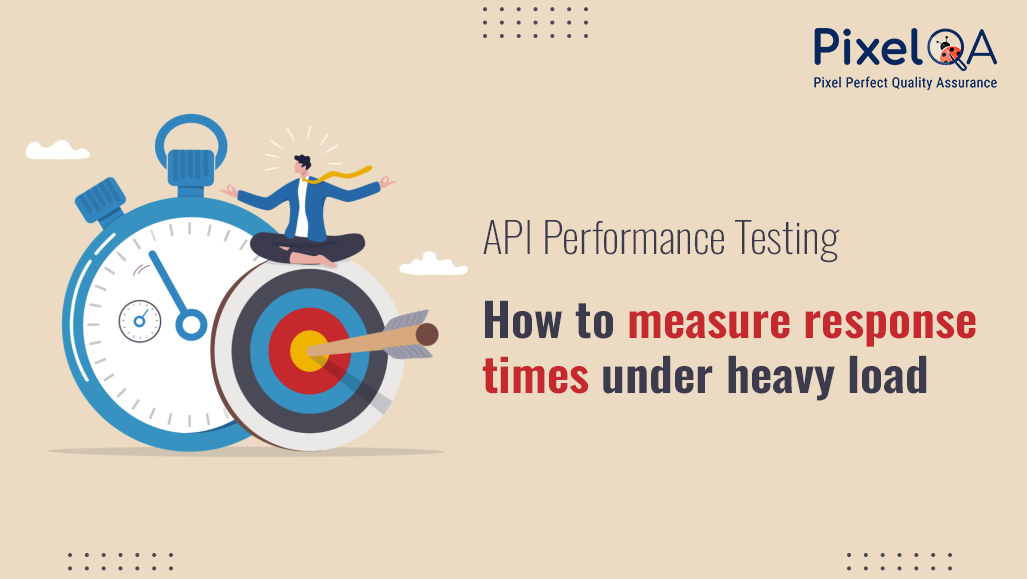
Table of Contents
- Understanding API Performance Testing
- Key Metrics to Measure
- Tools for API Load Testing
- Steps to Measure Response Times Under Heavy Load
- Best practices for accurate Results
- Conclusion
APIs are the backbone of modern applications, enabling communication between different software components. Maintaining dependability and satisfaction with users requires making sure they function well under high load. This blog explores how an API Testing Services can effectively measure API response times under heavy load, providing robust and scalable systems.
Understanding API Performance Testing
Testing the responsiveness, stability, and scalability of APIs under many circumstances is known as API performance testing. It is especially crucial for identifying blockages that can form during times of high traffic.
Key objectives include:
- Measuring response times under various loads.
- Ensuring APIs handle concurrent requests efficiently.
- Identifying performance bottlenecks.
- Validating service-level agreements (SLA).
Key Metrics to Measure
When testing API performance, the following metrics are critical:
- Response Time: The time taken by the API to respond to a request.
- Throughput: The number of requests processed per second.
- Error Rate: The percentage of failed requests.
- Latency: The delay before the API begins responding.
- CPU and Memory Utilization: Resource consumption during testing.
Tools for API Load Testing
Several tools can help simulate heavy loads and measure API performance:
- JMeter: A widely used open-source tool for performance testing, capable of simulating high loads.
- Gatling: A developer-friendly tool with detailed reports and scalability testing capabilities.
- LoadRunner: A comprehensive enterprise-level tool for load testing.
- Postman: Offers basic performance testing features via its "Collection Runner" and monitors.
- k6: A modern, developer-centric tool for API performance and load testing.
Steps to Measure Response Times Under Heavy Load
Define Performance Objectives
Set clear goals, such as acceptable response times, throughput, and error rates.
Align objectives with business requirements and SLAs.
1. Design Test Scenarios
- Create realistic scenarios reflecting actual usage patterns.
- Include different request types, payload sizes, and user concurrency levels.
2. Set Up the Test Environment
- Mimic production conditions as closely as possible.
- Ensure the test environment has similar configurations and resources.
3. Run Load Tests
- Gradually increase the load to identify the system's breaking point.
- Use tools like JMeter or Gatling to simulate traffic.
4. Monitor and Analyze Metrics
- Track response times, latency, error rates, and resource utilization.
- Use monitoring tools like New Relic or Grafana for detailed insights.
5. Identify bottlenecks and optimize
- Pinpoint performance issues, such as slow database queries or inadequate server capacity.
- Implement fixes and rerun tests to validate improvements.
Best Practices for Accurate Results
- Use Realistic Data: Test with datasets that mimic production data.
- Simulate Concurrent Users: Reflect peak traffic conditions.
- Test API Dependencies: Include external services or databases.
- Automate Tests: Integrate performance tests into CI/CD pipelines.
- Run Tests Regularly: Ensure ongoing performance monitoring and improvement.
Conclusion
API performance testing under heavy load is a vital practice for ensuring system reliability and user satisfaction. Teams may create reliable APIs that can manage actual traffic situations by tracking response times and other important metrics, locating bottlenecks, and improving performance.
Investing in the right Software Testing Company, tools, and strategies helps monitor and improve your API's performance. A well-tested API not only enhances the user experience but also makes your application more marketable.
About Author
Nikul Ghevariya is a dedicated QA Executive at PixelQA, evolving from a trainee to a valuable contributor across diverse projects. With ambitious goals, he aspires to master new QA tools, and delve into Automation and API testing, showcasing an unwavering commitment to continuous learning.

_638772979261224221.png)